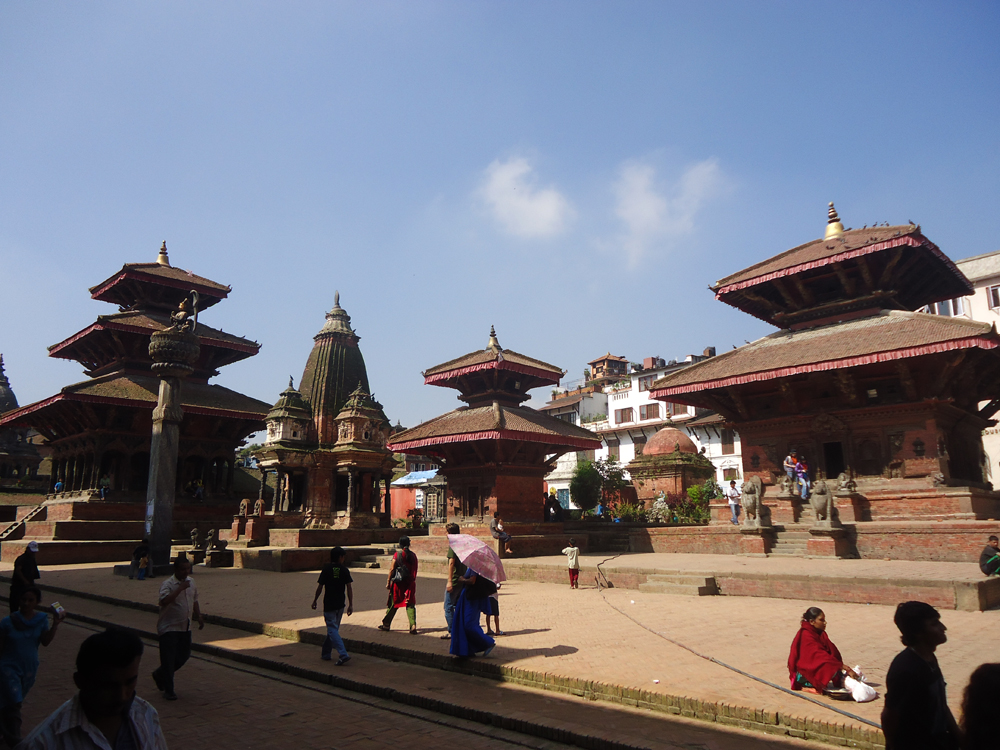The Ancient Patan Durbar Square
Patan Durbar Square is southern side of Kathmandu, separated by the Bagmati River. The Patan Durbar Square was established in the 12th century and left a very unique ancient history. Nowadays, it is known as the city of fine metal carving. It had some impressive ancient names like Yala, Latipur, and Patan. Originally, it was called Lalitpur (the land of the artist), and the Durbar remained at Patan. In Sanskrit, Patan means pastureland. So, in ancient times, this was a wide pasture field before modern civilization, and the Malla Dynasty was introducing its regimes at this point. Because of its impressive ancient architecture, culture, and tradition, it is designated as a UNESCO World Heritage Site. The ancient Malla Dynastic Palace is an artful museum. Patan is also known as the oldest Buddhist city, where both Buddhism and Hinduism prevail harmoniously. There are many Bahals, pagodas designed for temples, stupas, and Monasteries. Patan Durbar's square area was also very badly damaged by the earthquake in 2015. Many important ancient temples were destroyed. UNESCO and the Archaeological Department are continuously rebuilding those destroyed shrines one by one for as it was.

Cultural Significance:
- Living Museum: Patan Durbar Square is often referred to as a "living museum" because traditional festivals, rituals, and ceremonies continue to take place here, preserving the ancient Newar customs.
- Blend of Hinduism and Buddhism: The Square showcases a unique fusion of Hindu and Buddhist religious practices, reflecting the harmonious coexistence of these two major faiths in Nepal.
- Center of Arts and Crafts: Patan is renowned as the "City of Fine Arts" due to its rich tradition of producing exceptional art, including intricate wooden carvings, skilled metalwork, stone sculptures, and exquisite thangkas. The craftsmanship displayed in the Durbar Square is a testament to this heritage.
- Festivals: The Square comes alive during various festivals, such as Seto Machhindra Jatra, Rato Machhindra Jatra, Yaksha and Raxes Jatra, and numerous carnivals and festivals throughout the year, featuring colorful decorations, music, traditional dances, and vibrant processions.
Historical Significance:
- Ancient Origins: The city of Patan, also known as Lalitpur or Lalitapattan, dates back to the 3rd century BCE, with some legends attributing its founding to Emperor Ashoka, who is said to have built four stupas at its corners. The ancient name of Patan is “Yala” which means the land of artists. Later, it was called Patan, which means a wide pastureland in the Sanskrit language.
- Malla Dynasty Center: The Square flourished significantly under the Malla dynasty, which ruled the Kathmandu Valley from the 12th to the 18th century. Most of the present structures were built or extensively renovated during this period, particularly under King Siddhi Narsingh Malla (17th century).
- Royal Palace: Patan Durbar Square served as the royal palace for the Malla kings of Patan, making it a central hub for political, religious, and cultural activities.
Architectures and Temples:

- Newari Architecture: The Square is a prime example of Newari architecture, characterized by intricate wood carvings, multi-tiered pagoda-style temples, and elaborate stone sculptures.
- Three Main Courtyards: The palace complex features three main courtyards: Mul Chowk, Sundari Chowk, and Keshav Narayan Chowk. These courtyards were used for royal ceremonies and public events.
- Krishna Mandir: A prominent stone temple built in 1637 by King Siddhi Narsingh Malla, it is dedicated to Lord Krishna and is considered the first specimen of Shikhara-style architecture in Nepal, featuring 21 gilded spires and elaborate carvings.
- Taleju Bhawani Temple: Dedicated to the guardian deity of the Malla kings, this three-story temple showcases beautiful carvings.
- Bhimsen Temple: Known for its ornate wood carvings and dedicated to Bhimsen, a deity revered by traders.
- Golden Temple: This temple was built in the 15th century and is full of Buddhist culture and tradition. In the main yard, there is a temple with 12 wooden poles, with each deity representing a month in a year, and in the main sanctum, there is the statue of Shakyamuni Buddha. On the side wall, there is a wooden board hanging, which is known as the Tibetan calendar format..
- Kumbheshwar Temple: A five-storied pagoda temple dedicated to Lord Shiva, built in the 14th century, and unique for having a natural spring in its courtyard.
- Patan Museum: The former royal palace, the museum displays a remarkable collection of bronze and wooden artifacts, statues, and mysterious Cultural simultaneity. The brief of the Hinduism and Buddhism religions.
- Water Spouts (Hitis): Traditional stone water spouts are also found within the square, serving as both functional water sources and ornate architectural features.
- Vishwanath Temple: It was built at the beginning of the 16th century and dedicated to lord Shiva. The struts (supporting the roof) are full of various postures of erotic carving.
- The big bell:the bell was hung for homage and adoration to the lord, but after the sudden period, it was used as a ceremonial bell.




